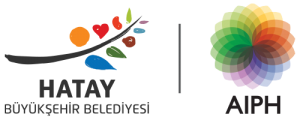Coppersmithing
Don’t you think it’s a miracle that this profession has survived since the Copper Age, when mankind started to process copper ores, and that it’s still in practice in the present day? All civilizations that have ever lived in Hatay have left traces related to copper. Therefore, Hatay copper craftsmanship holds a special place with its unique patterns, craftsmanship and labor. Inside the long bazaar in Antakya, there is a separate Arasta Street known as the Coppersmiths’ Bazaar.
The copper masters from Hatay, who continue this profession in this bazaar, make utensils unique to the region and also sell copper souvenirs. Today, promisingly, new generations are interested in copper products such as pots for cooking stuffed vegetables, künefe trays, cauldrons, ewers, pans, jugs, trays, and ladles, which lead to the opening of a copperware museum in the Traditional Antakya House. Therefore, with its inspiration and magnificence that defies all this history, coppersmithing will be waiting for its visitors on Art and Culture Street in Expo 2021 Hatay.
Tinsmithing
Tinsmithing is the coating of old and worn utensils with tin and powder salammoniac. Tinsmithing has decreased considerably with the introduction of steel, teflon, enamel and aluminum items. Courtesy of those who still use copper pots, utensils, trays and value these items, the profession is carried on by few masters today. Tin is an expensive mineral and the tinsmithing is difficult so this local craft, which is on the verge of extinction, will make a brilliant comeback and will take its place at the Art and Culture Street at Expo 2021 Hatay.
Rug making and Aba making
Rug and aba are two separate handicrafts that take you to a time and feeling which are difficult to describe as soon as you touch them. The history of these two works, on which each color, pattern and figure has different meanings, is based on ancient nomadic cultures. Rug making and Aba making, which have been continued with traditional methods for centuries in Hatay, can unfortunately be practiced with the efforts of very few masters today.
Abdullah Akar, one of the last representatives of the profession that went into the Guinness Book of Records by weaving 75 meters of rugs in 75 days, on the 75th anniversary of Hatay’s participation in the Motherland, also paved the way for the revival of this profession by exporting Traditional Hatay aba to 72 countries. Following this path, all valuable Rugmaking and Aba making masters of Hatay will meet with their visitors on Art and Culture Street at Expo 2021 Hatay.
Spinning
The dictionary meaning of spinning in Turkish is a cylindrical cabinet that is turned by hand or foot, which is used in works such as spinning yarn, winding yarn. According to research, it is known that this profession has been maintained in Hatay for at least a few centuries. In the center of Antakya, the Kunduracılar entrance of the Uzun bazaar is still known as the çıkrıkçılar (spinners) street. Many simple but necessary products such as wooden tables, mallets, chairs and spoons, which had an important place in daily life in Hatay and used in daily household, had been made by spinners for years.
Spinning is still important in Hatay gastronomy today. One of the culinary wonders of Hatay, the Stuffed Keşşir is the biggest example of this. Keşşir, the wonderful stuffed dish, can come to tables after being carved on the workbench of the spinners. Another example is Kömbe. Can the people of Hatay cook Kömbe without a Kömbe mold? This is not possible. Indeed, spinning masters continue to touch daily life by using their creativity. This local art, which is performed in only one or two shops today and has turned into designing souvenirs to a large extent, will meet with visitors on the Art and Culture Street as part of the Expo 2021 Hatay organization.
Shoe repairing
Shoe repairing is one of the professions dated back to ancient history, which has a very valuable place among Hatay handicrafts. Köşkerlik(shoe repairing), which means the person who makes products using leather, shapes and molds leather, is the repair of leather sandals, boots, flat-heeled shoes, etc. Just as tanning was replaced by artificial leather, Köşkerlik transferred its place to fabricated shoemaking. However, due to the fact that very few masters who practice this profession are alive today, this profession has joined the professions of Anadolu Ata (Anatolian Fathers), which are on the verge of being forgotten. These precious masters are the last representatives of the shoe repairers, who have thousands of years of history and had their own guild in the Ottoman period. Within the scope of Expo 2021 Hatay organization, it is planned that this profession will take its place in the Art and Culture Street event area, so that it will be introduced to more people as well as future generations.
Saddle making
A ‘saddle’ is a tool used to ride and load mounts. The maker and master of this tool is called “saddle maker”. As you may have guessed, this profession, which emerged with the aim of riding on the back of animals and not damaging the back of the animal with the load to be carried, is also a craft that requires great care. For the revival of this local art, which is almost on the verge of extinction today, all the valuable saddle makers alive today will take their place at the Art and Culture Street at Expo 2021 Hatay and share the intricacies of the profession with the visitors.


